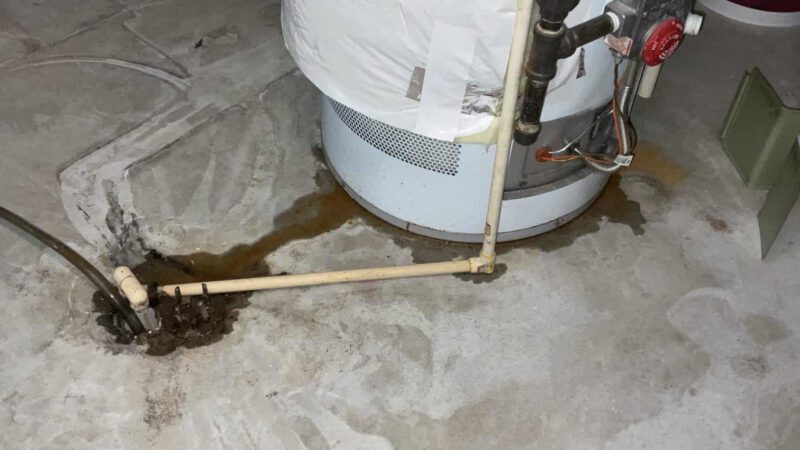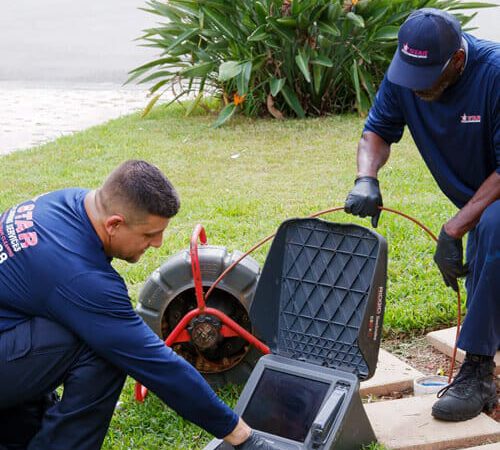The Differences Between Plumbing and Piping
While plumbing and piping may seem similar on a surface level, they each have different purposes and follow distinct rules and regulations. Plumbing brings water into your facility and provides safe drainage, while process piping handles the movement of gases, chemicals, and water during your manufacturing process.
Have you been noticing foul odors coming from your drains? This could be a sign of a clogged drain or trap. For more details, visit https://www.plumbing-express.com/.
When clogged drains can no longer be cleared with plungers or plumbing snakes, it’s time to call in the big guns. The powerful spray of water from a hydro jetting tool can clear even the most stubborn blockages in your sewer lines. This method can also help prevent future clogs by cleaning the build-up stuck to your pipe walls.
The best part about hydro jetting is that it is non-invasive and doesn’t damage your pipes. Unlike other techniques that require digging up your pipes, hydro jetting uses a long flexible hose to access the clogged area. The nozzle on the end of the hose can be turned on or off to control the strength of the water stream. This flexibility makes it possible to clean hard-to-reach areas of your plumbing system without tearing up your property.
Serious clogs often occur deep in your plumbing lines, where they can cause sewage to back up into your home or business. You may notice puddles of standing water in your kitchen or bathroom, or hear gurgling noises from the drains. The good news is that hydro jetting can completely remove these clogs and restore proper water flow.
It’s important to remember that hydro jetting is only effective if it is done by a professional plumber. This technique can be dangerous in the hands of an untrained individual and could lead to costly damage to your plumbing system. That’s why it’s important to trust Patrick Riley | Isley’s professionals to handle your hydro jetting needs.
Unlike alternative methods of removing clogs, hydro jetting thoroughly cleans your pipes with no damage to your property or the environment. It’s also ideal for businesses and commercial properties with older plumbing systems that are more likely to develop clogs. This preventative maintenance will reduce the chances of expensive repairs and extend the lifespan of your pipes. To learn more about our hydro jetting services, call us today! We offer a free camera inspection with every hydro jetting service, and all work comes with a 90-day warranty.
Drain Snake
A drain snake is a coiled steel wire with a handle that you crank to drive it deep into the pipe. It can break up larger clogs that are not removed by a plunger or chemical cleaner. Unlike chemical drain cleaners, it does not eat away at the pipes and will not harm your children or pets if they come in contact with it.
Before using a plumbing snake, prepare the area around it. You may want to take off the P-trap (a U-shaped pipe bend) and/or trap arm which lie between the p trap and wall pipe, as well as empty all of the water that is collected in them. Detaching these components can make it easier to snake the drain, and will help you clean up the mess.
If you are using a handheld drain snake, it is recommended that you start with the most accessible access point such as the p-trap or an opening in the wall. Loosen the thumb screw on the snake’s drum to release the cable, and then push it down the pipe until resistance is felt. Once the head of the snake is in contact with an obstruction, you should start turning the crank to slowly advance it forward until it is fully extended. Move it up and down, as well as side to side, in order to dislodge any debris stuck to the sides of the pipe walls.
After a few turns, you should be able to feel and hear the snake scraping against the obstruction. Once it has successfully broken up and dislodged the clog, remove the snake and re-assemble the sink components. Re-test for water flow and clean up any remaining rubbish.
Whether you are using a handheld drain snake or one that is powered by electricity, it is important to thoroughly clean it after each use. This will prevent the buildup of a sticky, odor-producing residue and also ensure that it is ready for its next adventure down your pipes! Submerge the snake in a mixture of warm water and antibacterial soap, and then rinse and dry it. Once it is ready for storage, you can wind it up and store it in a dry place until you need to use it again.
Baking Soda & Vinegar
Baking soda and vinegar are household products that have been used for decades as part of home cleaning solutions. The two have become popular cleaning ingredients because they are cheap, environmentally friendly, and effective at removing some stains and odors. Vinegar, made from acetic acid, breaks down mineral deposits and can be used to deodorize surfaces. Baking soda, made from sodium bicarbonate, is a mild abrasive that can scrub surfaces clean and remove some stubborn stains.
When vinegar and baking soda are combined, they react to produce carbon dioxide gas which can lift dirt from surfaces. The reaction is also visually appealing as it can cause the mixture to fizz and bubble. This reaction is known as an acid-base reaction. It is safe to mix baking soda and vinegar for cleaning, as long as they are kept in separate containers. This prevents them from combining to form sodium acetate, a chemical that is toxic to plants and animals.
In fact, mixing baking soda and vinegar is one of the best home remedies for a clogged drain. To perform this remedy, pour a small amount of baking soda into a drain followed by a cup of warm (or hot) vinegar. The resulting fizzing will dislodge any stuck-on gunk and flush the drain with water. This technique should only be used for minor clogs and is not intended as a replacement for commercial drain-clearing products or professional plumbing services.
The reason this home remedy works is that baking soda and vinegar are both acids, so they react with each other to create carbonic acid, which dissolves organic compounds and breaks down minerals. The reaction is also effective at scouring the surface of a sink or tub. However, the abrasive quality of baking soda can damage delicate surfaces, and it is important to use this product with caution around sensitive materials. It is also important to rinse the sink thoroughly after using this remedy. Alternatively, you can make a baking soda paste by mixing dry baking soda with just enough water to form a paste-like consistency, apply the paste to a stained area and let it sit for a few hours before scrubbing it off with a damp cloth or sponge.
Chemical Cleaners
Chemical cleaners are highly effective at removing a wide range of contaminants and stains. They can be found in many household and industrial products, such as detergents, bleaches, drain cleaners, oven cleaners, and scouring powders. These products usually contain petrochemicals and work by penetrating surface soils, dissolving them, and then rinsing them away with water.
They can be used to clean many different types of surfaces, including metals, concrete, plastics, and even living tissue. These chemicals are typically very extreme on the pH scale, either alkaline or acidic, and can corrode organic materials such as stains, living tissue, and some types of mineral deposits (hard water buildup).
Corrosive cleaning chemicals are often safer to use than non-corrosive ones. For example, sodium carbonate is a common ingredient in laundry detergents to remove oily stains; but it is not very safe for skin contact and can corrode aluminum products. Non-corrosive ingredients, such as mild acids and chelants, are often safer to use than corrosives, but they are still very harsh substances that can burn or damage the skin.
Using chemical cleaners can also save time and money during shutdowns, as they can significantly reduce the decontamination process. However, chemical cleaning can cause corrosion and equipment damage if the wrong procedures are followed or if inexperienced workers are used.
The environmental impact of using chemicals for cleaning is a growing concern, as they are largely flushed down sink and floor drains and released into the environment. Eco-friendly chemical cleaners are formulated to break down naturally and blend in with the surrounding ecosystem, so that they don’t end up polluting the waterways, air and ground where we live.
Using harsh cleaning chemicals can also lead to chemical burns and respiratory issues, particularly in people with sensitive skin or respiratory conditions. These cleaners can irritate the skin, eyes and nose and can create unpleasant odors that are difficult to get rid of. Additionally, they can leave a residue on surfaces and may require special cleaning methods to remove. However, high-quality eco-friendly chemical cleaners are available that can perform all of the same tasks as traditional cleaners without the dangerous effects.


